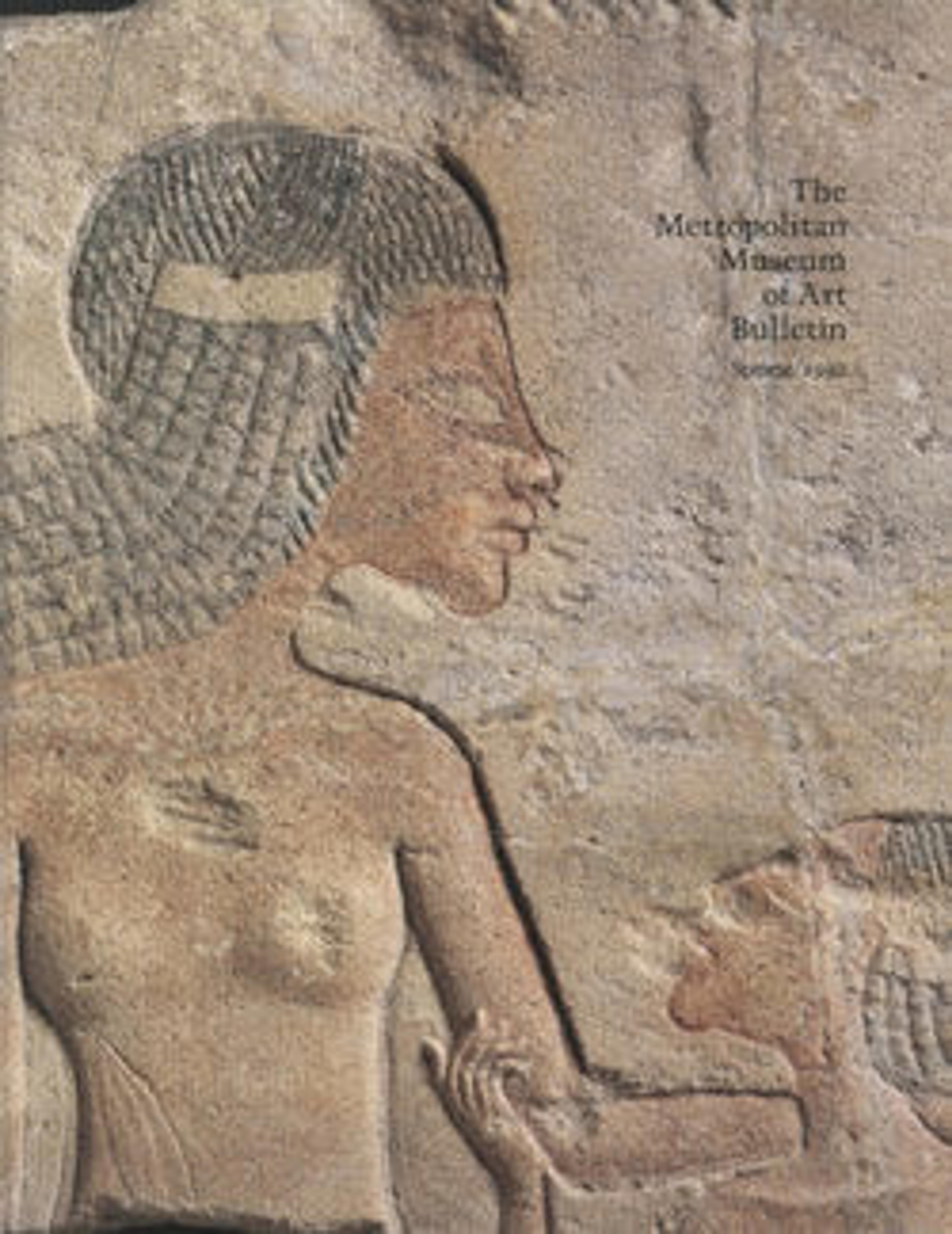Earring
This gold earring is an example of a technique called cloisonné, in which the design is outlined in precious metal – gold in this case – and filled with other materials, such as the turquoise, lapis lazuli and carnelian colored by cinnabar seen here.
In the center of the earring a circle encloses a partial male figure with incised decoration above a winged disk. The male figure, shown from around the waist up, wears a robe with flaring sleeves and circular decorations and a tall cap with voluminous hair spilling out from beneath. He has a long beard and he raises one hand while holding the other in front of his waist, where he grasps a bow or staff. The disk has a crescent inside of it, and two wings on either side of it which curl inward at the top. A trapezoidal feathered tail emerges from the bottom of the disk. The enclosing circle is decorated with triangles.
Seven smaller circles with crescents inside them, separated by gold rhombuses, surround the central one. Six of these circles contain male half-figures similar to the one in the middle of the earring. These figures all face the central figure. The circle at the bottom of the earring contains two smaller crescents, perhaps meant to represent an open flower blossom. The outer border of the earring is comprised of triangles, and the edge features a row of lotus blossoms. The top of the earring has an opening which originally contained a latch by which the earring would have been attached to the ear.
The figure in the winged disk occurs often in Achaemenid art, and is usually understood to be the god Ahura Mazda. The smaller figures probably represent the Persian king, making a gesture of acknowledgment and respect.
In the center of the earring a circle encloses a partial male figure with incised decoration above a winged disk. The male figure, shown from around the waist up, wears a robe with flaring sleeves and circular decorations and a tall cap with voluminous hair spilling out from beneath. He has a long beard and he raises one hand while holding the other in front of his waist, where he grasps a bow or staff. The disk has a crescent inside of it, and two wings on either side of it which curl inward at the top. A trapezoidal feathered tail emerges from the bottom of the disk. The enclosing circle is decorated with triangles.
Seven smaller circles with crescents inside them, separated by gold rhombuses, surround the central one. Six of these circles contain male half-figures similar to the one in the middle of the earring. These figures all face the central figure. The circle at the bottom of the earring contains two smaller crescents, perhaps meant to represent an open flower blossom. The outer border of the earring is comprised of triangles, and the edge features a row of lotus blossoms. The top of the earring has an opening which originally contained a latch by which the earring would have been attached to the ear.
The figure in the winged disk occurs often in Achaemenid art, and is usually understood to be the god Ahura Mazda. The smaller figures probably represent the Persian king, making a gesture of acknowledgment and respect.
Artwork Details
- Title: Earring
- Period: Achaemenid
- Date: ca. 6th–4th century BCE
- Geography: Iran
- Culture: Achaemenid
- Medium: Gold, turquoise inlay
- Dimensions: 0.3 × 0.35 × 6 cm, 31.08g (1/8 × 1/8 × 2 3/8 in., 1.096oz.)
- Credit Line: Gift of Norbert Schimmel Trust, 1989
- Object Number: 1989.281.33
- Curatorial Department: Ancient West Asian Art
More Artwork
Research Resources
The Met provides unparalleled resources for research and welcomes an international community of students and scholars. The Met's Open Access API is where creators and researchers can connect to the The Met collection. Open Access data and public domain images are available for unrestricted commercial and noncommercial use without permission or fee.
To request images under copyright and other restrictions, please use this Image Request form.
Feedback
We continue to research and examine historical and cultural context for objects in The Met collection. If you have comments or questions about this object record, please contact us using the form below. The Museum looks forward to receiving your comments.
